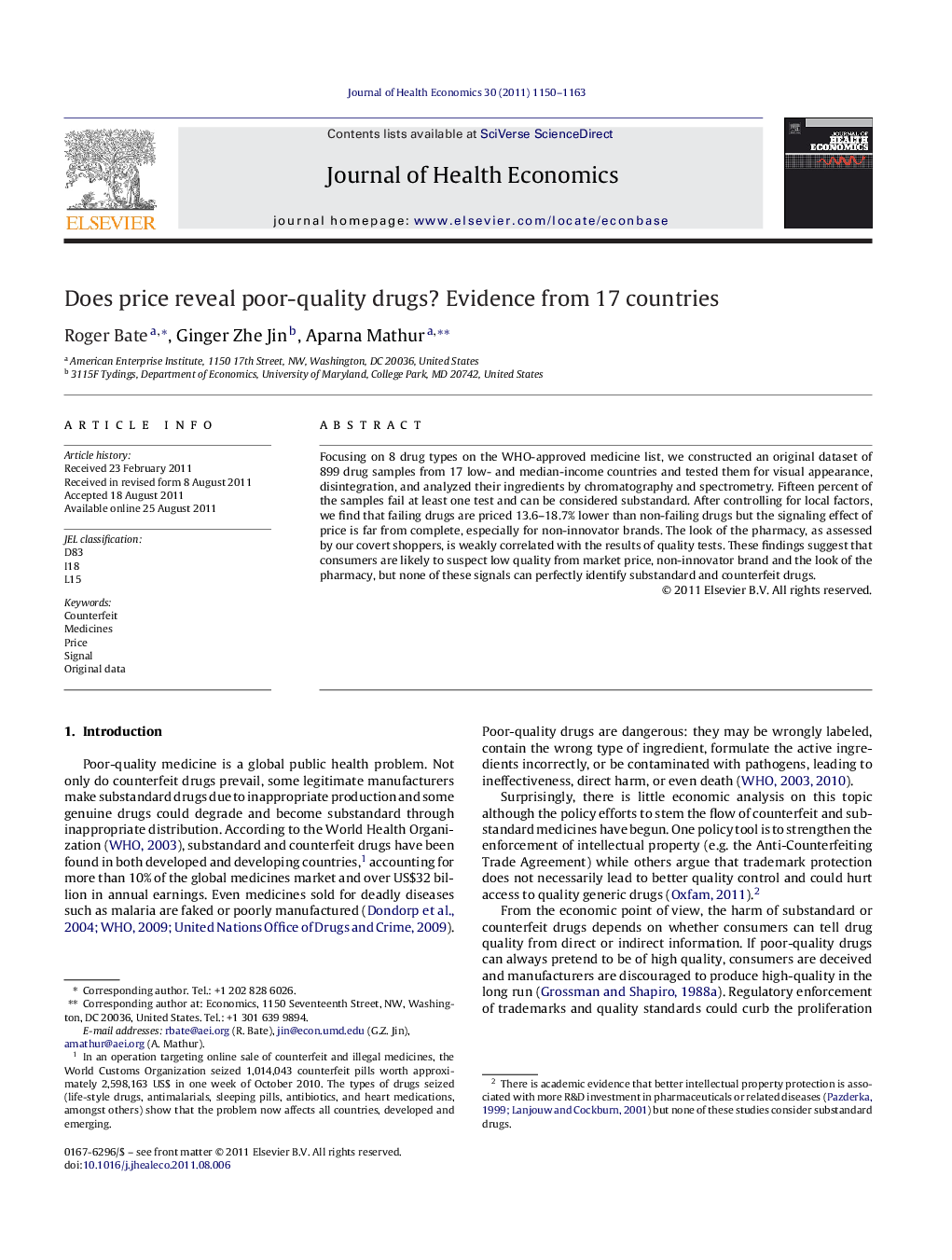| Article ID | Journal | Published Year | Pages | File Type |
|---|---|---|---|---|
| 961921 | Journal of Health Economics | 2011 | 14 Pages |
Abstract
Focusing on 8 drug types on the WHO-approved medicine list, we constructed an original dataset of 899 drug samples from 17 low- and median-income countries and tested them for visual appearance, disintegration, and analyzed their ingredients by chromatography and spectrometry. Fifteen percent of the samples fail at least one test and can be considered substandard. After controlling for local factors, we find that failing drugs are priced 13.6-18.7% lower than non-failing drugs but the signaling effect of price is far from complete, especially for non-innovator brands. The look of the pharmacy, as assessed by our covert shoppers, is weakly correlated with the results of quality tests. These findings suggest that consumers are likely to suspect low quality from market price, non-innovator brand and the look of the pharmacy, but none of these signals can perfectly identify substandard and counterfeit drugs.
Related Topics
Health Sciences
Medicine and Dentistry
Public Health and Health Policy
Authors
Roger Bate, Ginger Zhe Jin, Aparna Mathur,
